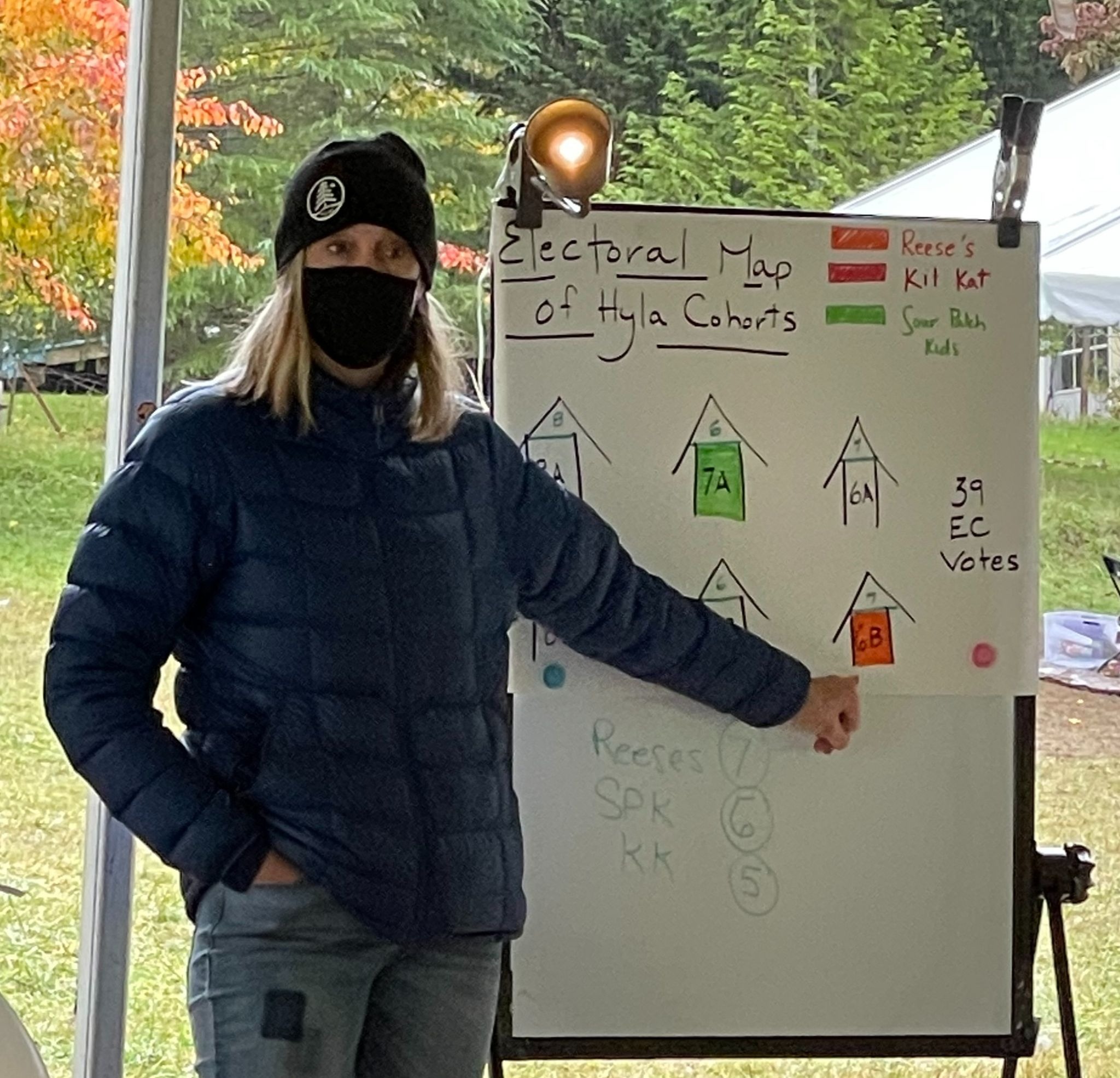Hyla Stories
Preparing the next generation of voters

Last week, Hyla teachers provided interactive opportunities to help students understand our election process so that they will become engaged citizens and active voters by the 2028 Presidential election.
Hyla Math Classes: With teachers Cindy, Alex, Erik, and Josh, students in all grades learned about the popular vote, representational vote, and the Electoral College system through the process of selecting a candy. From the school-wide popular vote, three strong candidates emerged: Reese’s Peanut Butter Cups, Kit Kat, and Sour Patch Kids. In a representational voting exercise, students were sorted into different-sized groups and only one representative in each group was given a ballot. When some students wished for other candy options, the class discussed that sometimes the ballot may not include your favorite choices. Last, students experienced the Hyla version of the Electoral College system. Each of the 6 cohorts received electoral votes depending on relative size. Early polls indicated that the 8th graders preferred chocolate over gummy candy. However, 8A was the only cohort to give its votes to Kit Kat, so Reese’s Peanut Butter Cups lost the possibility of winning or splitting the election, in this candy three-party system. On Monday, each student received Sour Patch Kids, the winner. This election exercise extended throughout the week, just as it took days for votes to be counted in the US Presidential election, so “it worked out perfectly”. “They [the students] were totally into it,” said Cindy, describing how both students and teachers learned a lot from this participatory and school-wide math exploration.
Hyla History Classes: Teachers Jennifer and David also helped students debrief and understand the election. Sixth graders, who have been studying the American colonies, had a great discussion with Jennifer, learning about the process and looking at the website 270towin.com. Their optional homework to fill out an Electoral College map took longer than expected to complete, due to the election results. David’s current thematic unit for 7th graders focuses on borders. With this geographic emphasis, he asked students to color a map with each state part red and part blue based on percentages in order to “try to get away from such strong duality”. Eighth graders are now studying what power is. They’ve listened to Obama’s acceptance speech from 2008 and compared his language with Trump’s speech from 2016. Seventh and eighth grade students also filled out the mock ballot from the Washington Secretary of State’s office. To provide a wider perspective for middle schoolers in the 2020 Presidential Election, David taught his students about the election of 2000. Looking back at this time in our country two decades ago, a contentious election, can help provide context, that we as a nation have been divided before, and we have been through tumultuous difficult times together. Looking back at history can help us look forward into the future both calmly and confidently.
